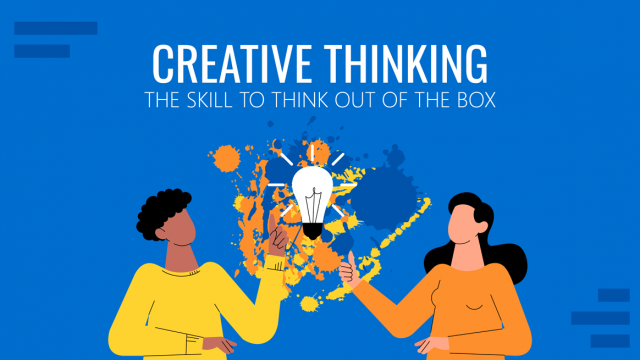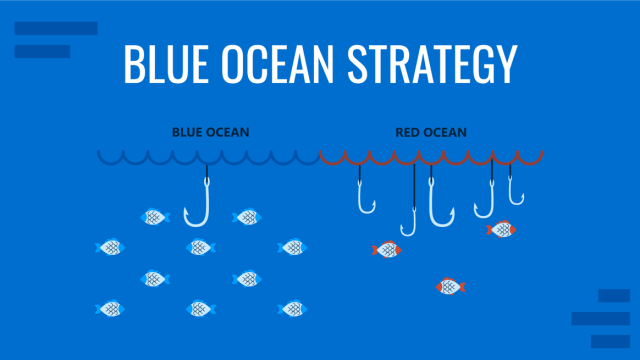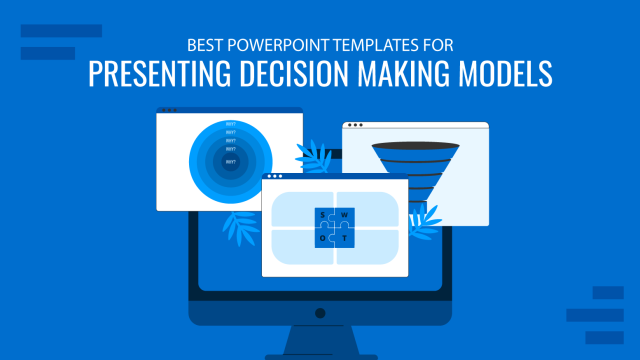
As cognitive beings, we humans have a tremendous ability to use our brains in different ways. Not only can we think in a general sense, but we can also shape how we think to get the results we seek.
We think to solve problems daily, but some complex topics or questions need more than the thinking we do for driving or answering emails. In these cases, you need a thinking technique to help your mind expand to unexpected possibilities and creativity.
Divergent thinking is a thinking methodology that can help you problem-solve and ideate no matter what your perceived creative capacity is. All issues can benefit from divergent thinking to find a solution, including your business problems.
In this guide, we’ll discuss what divergent thinking is, how it works, the benefits, and some actionable ideas to get started with your session. Plus, we’ll prepare a presentation that exposes the findings of a divergent thinking process and the expected outcome once the solution is applied.
What is Divergent Thinking?
The notion of divergent thinking is tied to a couple of cliches; “Thinking outside the box” and “coloring outside the lines.” These remarks about creative thinking are great visual metaphors. When you think divergently, you put aside the confines of a symbolic mental box and spark thoughts in other areas.
Divergent thinking is essential for solving difficult and complex problems. By using divergent thinking techniques, a person or a team can think of solutions that otherwise wouldn’t come up. With divergent thinking, businesses can innovate and step away from what’s expected or fits the mold.
Thinking Types
When thinking about thinking styles, we must consider the creative and the linear. Divergent thinking fits into the creative side of thinking. The other spectrum, linear thinking, includes thinking types like analytical and concrete thinking.
Here’s a list of the most used thinking styles; they all apply to how people run businesses and live their lives.
- Linear thinking
- Creative thinking
- Divergent thinking
- Convergent thinking
- Lateral thinking
- Analytical thinking
- Critical thinking
- Concrete thinking
- Reflective thinking
- Abstract thinking
- Mindful thinking
Divergent thinking is considered the most creative of all thinking styles. There’s no limit to how far you can think or what you can come up with. With divergent thinking, your imagination is on a joy ride. Divergent thinking is the source of innovation, trendsetting and world-changing ideas.
Divergent Thinking vs. Convergent Thinking
The almost exact opposite of divergence is convergence. Visually, divergence spreads out while convergence closes in. In divergent thinking, you aim to develop many ideas and solutions to one problem. On the other hand, convergent thinking brings many ideas together and uses logic to pinpoint key ideas and give tangible form to divergent ideas.
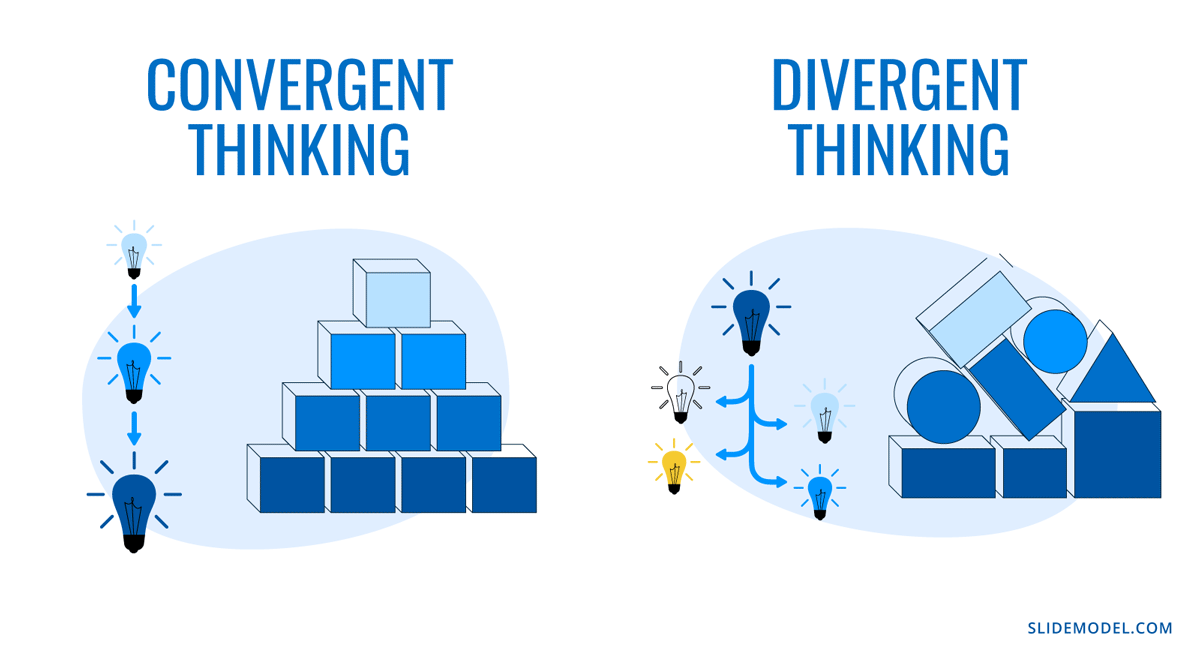
The thing about being able to control how you think for problem-solving and decision-making is that you can’t single out any type of thinking. Use one at a certain time, but then another when you reach the next step.
Divergent and convergent thinking work together in cycles. You use divergent thinking to develop many ideas and then use convergent thinking to shape the ideas into real actions and solutions. Use them in unison as complementary techniques.
The 4 Pillars of Divergent Thinking
Every divergent thinking initiative consists of four pillars. In Gerard J. Puccio’s book Creativity Rising: Creative Thinking and Creative Problem Solving in the 21st Century, he describes the pillars of divergent thinking as follows:
- Defer judgment. Any ideas that come up during a divergent thinking exercise are worth the effort and time it took to develop them. Don’t judge any ideas at any point. You want participants to feel comfortable and free to ideate; judgment stops creativity in its tracks.
- Go for quantity. Inspire participants to come up with lots of ideas. Ideas can be one word or two words. An idea in divergent thinking isn’t a fully formed sentence or solution; those come later. Collect all ideas on post-its or notes on a digital whiteboard; everything has value.
- Make connections. Create interconnected ideas from all the post-its and notes. Connect through words, categories, feelings, emotions, and results. You’re in charge of finding connections, don’t limit the experience, and be open to possibilities.
- Seek novelty. Put concepts together that you wouldn’t otherwise envision. Let new ideas flow from connections and associations. Novelty and innovation thrive from the freedom to ideate and be free in thought processes. Aim for ideas that surprise and inspire Aha! Moments from yourself and your team.
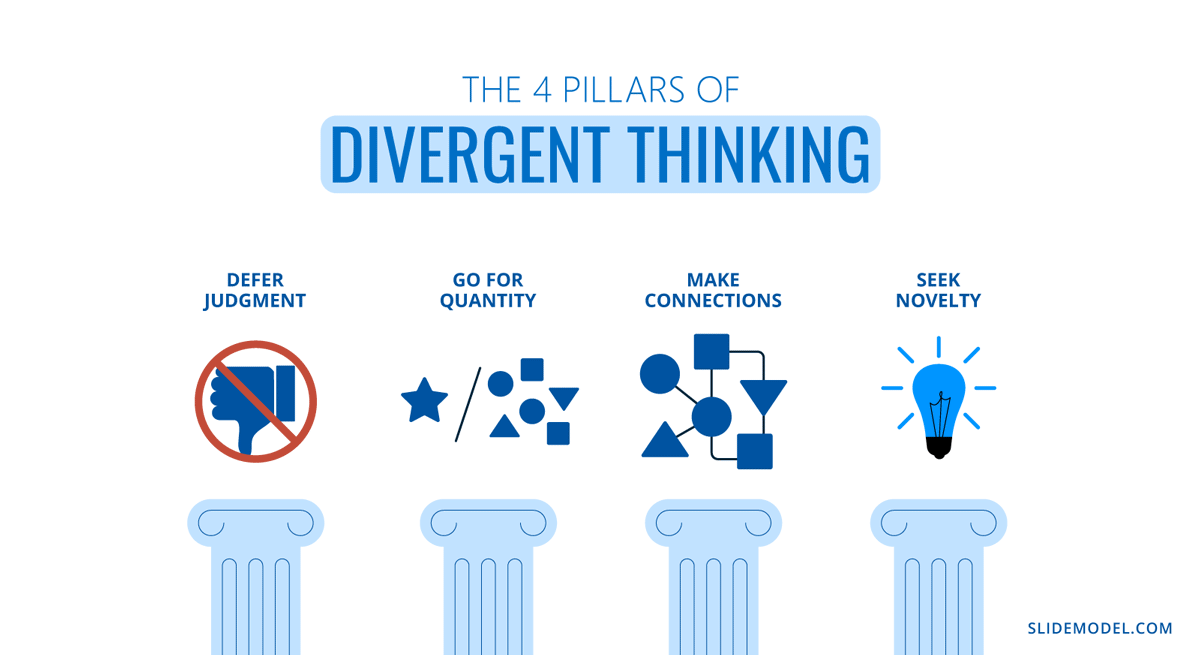
Benefits of Divergent Thinking in Business
In business, divergent thinking benefits everyone at work and in their lives. Here are four direct benefits for your business.
Inspires Creativity From Everyone
Like most thinking techniques, divergent thinking needs formulas and processes. Especially for those people in the team that don’t feel creative and have a hard time coming up with ideas on their own. Divergent thinking initiatives and processes dig deep into the psyche of the participants, letting them flow with creativity that doesn’t get shadowed in judgment.
Improves Flexibility For Change
Thinking divergently improves flexibility in thought and action. Being stone set on dated practices doesn’t help with the constant change we’re experiencing in how people live, work and communicate. Divergent thinking practices are like mental workouts for your brain; it doesn’t just help solve a specific problem during a session, it also helps people open their perception towards change. They learn to be flexible and pivot strategically when necessary.
Helps Visualize the Future
Team sessions with divergent and convergent thinking cycles help teams look beyond the big picture and toward the future. All things add up regarding the change that divergent thinking has on business processes. Practicing it opens up possibilities that weren’t possible before. Employees evolve into better versions of themselves through equitable thinking sessions with their colleagues.
Fosters Company Culture
Opening the floor for weird, bad, and crazy ideas during divergent thinking brainstorming sessions is key to fostering a positive company culture. When employees and team members are offered a safe space to share ideas without judgment, their feeling of satisfaction is heightened. Happy employees make happy workplaces. Happy workplaces thrive in positive company culture.
Divergent Thinking Models and Strategies
Thankfully, divergent thinking is a skill you can learn and practice regularly. Divergent thinking models help people and teams develop many ideas for a problem. Especially for those who don’t feel creative and have a hard time coming up with ideas independently.
Each model directs the thinking process a bit differently, resulting in different types of ideas. Let’s take a look at some divergent thinking models and strategies.
Mind mapping
The art of brainstorming with a mind map is the easiest way to get started with a divergent thinking session. Does your team need to determine how they can improve performance from the latest landing page? During an all-hands meeting, group session, or on your own, prepare a whiteboard with the question in the center. Let everyone add connected thoughts and ideas following the four pillars of divergent thinking.
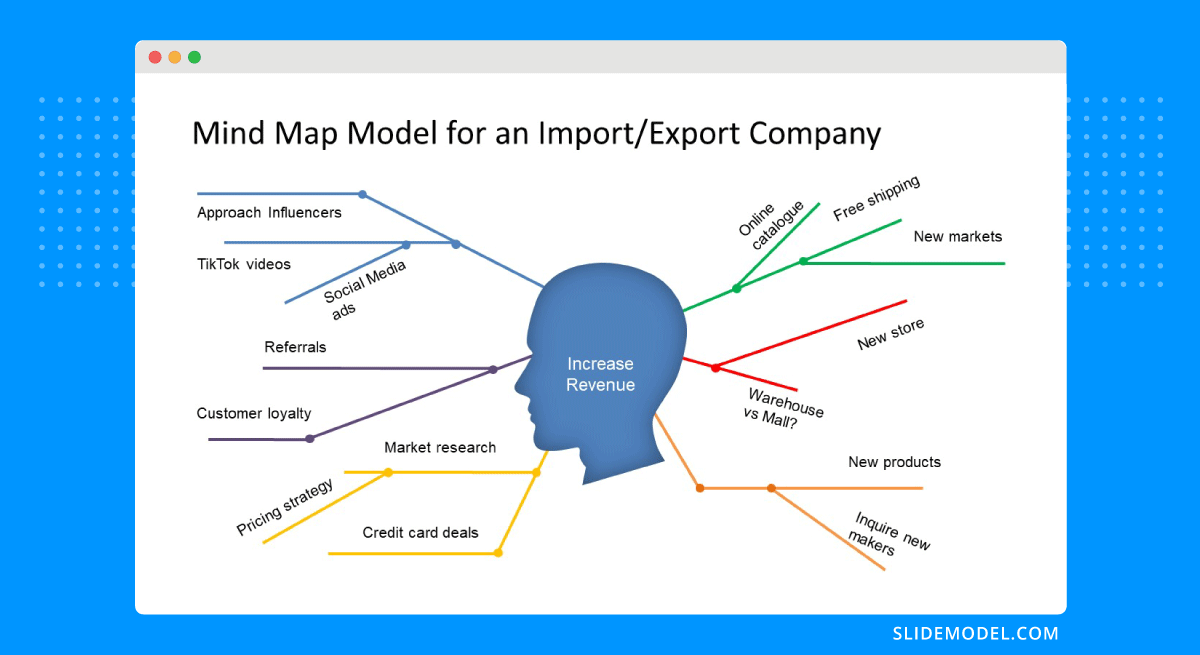
Asking, “How might we?”
Use the prefix “How might we” to ask questions about the problem at hand. Start with the original problem and add “How might we” and then keep asking it as ideas come up. For example,
“How might we reach new clients in different countries?”
– By opening offices in other countries.
“How might we open offices in other countries”
– Hiring people in other countries.
“How might we hire people in other countries?
– By posting job offers on LinkedIn and social media.
And continue this way until you have it all resolved. Do so with every idea. Do it fast! You start to doubt yourself when you take too long to continue the cycle. Answer quickly with the first thing you can think of.
Brain dump and mash-up
This divergent thinking technique is great for groups of stakeholders working in different teams who have come together to think divergently about a particular problem or pain point they share. First, present the problem and give each participant a block of Post-Its and a pen.
Share the question or issue with the group and ask them to write anything they come up with, words, sentences, quotes, and doodles. Limit the time to a 3-minute fast brain dump. Challenge them to fill up at least 20 post-its. Put up all post-its and start categorizing them by what seems right. Start combining different post-its and create new thoughts. Take notes, take screenshots or photos.
SCAMPER
The SCAMPER Method is an idea-generating technique that works best when you need to think divergently about a product or service. SCAMPER is seven techniques that help you develop ideas by prompting unexpected associations and connections.
It’s all in the name:
- S: Substitute
- C: Combine
- A: Adapt
- M: Modify
- P: Put to another use
- E: Eliminate
- R: Reverse
Go through each letter applying the prompt to the problem. What can you substitute or combine? How can you adapt the product or modify it? How could you put it to another use or eliminate parts of it entirely? In which way could you reverse a characteristic of the product? The answers will spark innovative and interesting ideas that can lead to a solution to the original question.
Read our guide to find out all you need to know about SCAMPER.
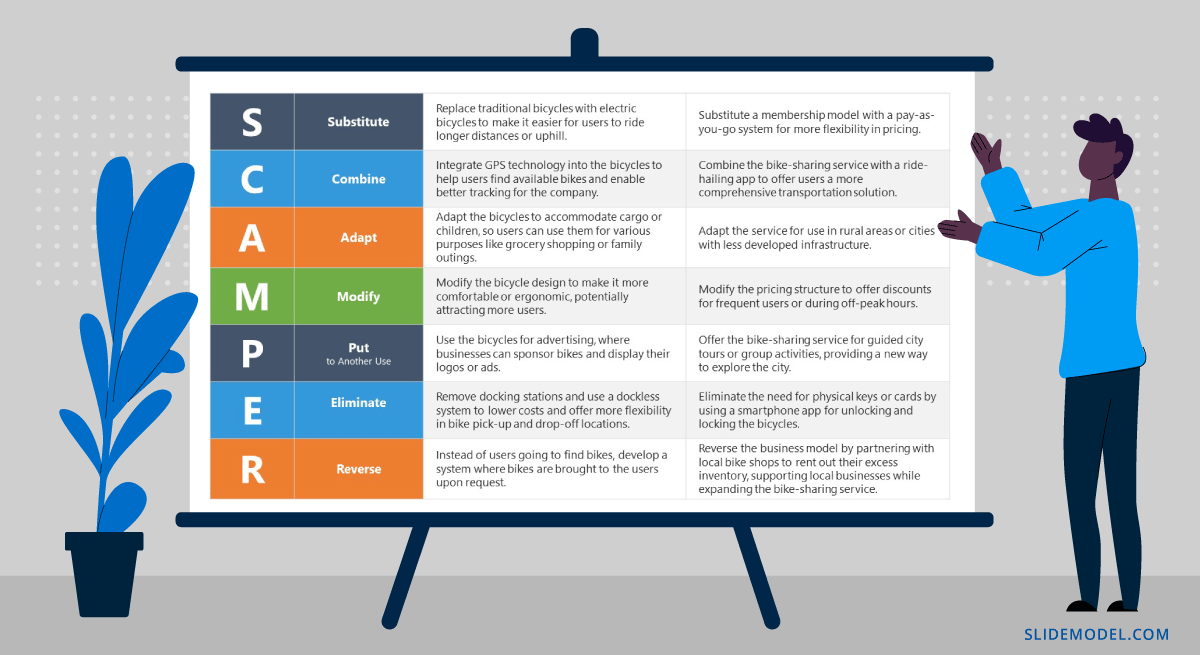
Asking, “Why does that matter?”
Like the “How might we?” question development, there’s also “Why does that matter?” Asking why, as a series of questions, digs deep into what stakeholders might be thinking but are having difficulty saying.
Keep asking, “Why does that matter?” until you reach solutions that can help solve immediate and long-term issues. Inspire participants to think big, think wide, and think free. This technique will bring up great ideas for community building and giving back.
SWOT Analysis with Mind Map
Use divergent thinking to process and annotate the strengths, weaknesses, opportunities, and Threats related to the question or issue. Take down lots of ideas with Post-Its or a collaborative whiteboard. Then incorporate convergent thinking to narrow down the most important notions for each category.
A SWOT Analysis opens the conversation, and ideas pop up in many ways for the strengths, weaknesses, opportunities, and threats. Choose the ones that relate the most to your project from the pot of ideas for each.
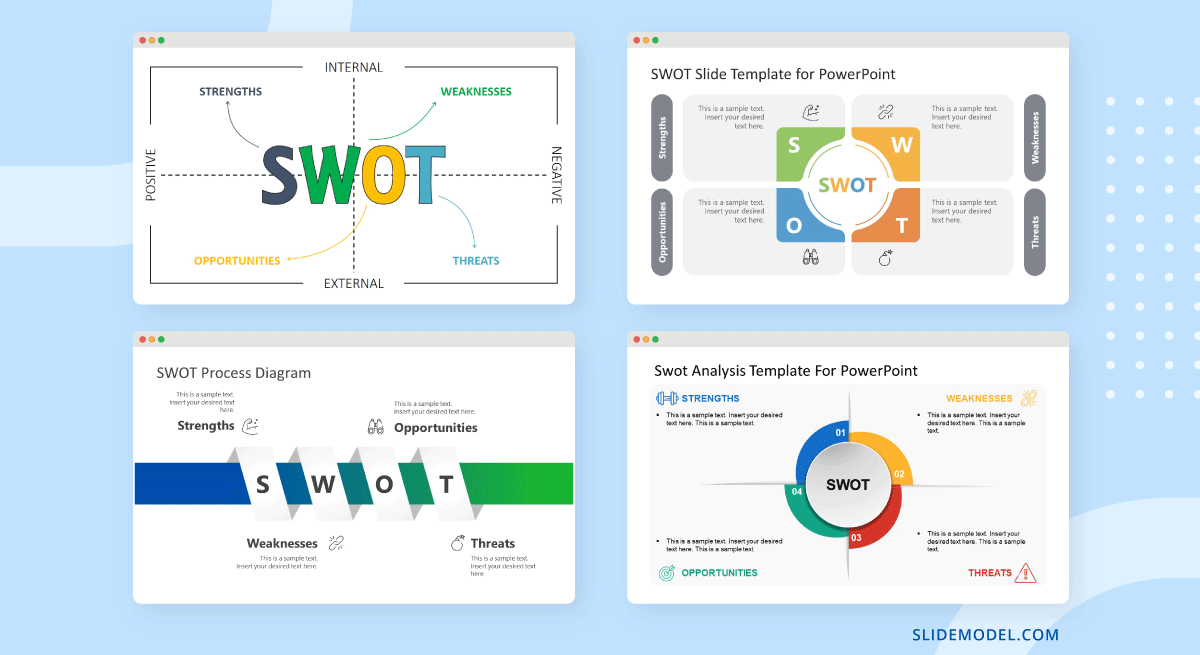
AI and Prompt Engineering
Finally, start using AI for divergent thinking sessions. Apply language learning models like ChatGPT to any of the models mentioned above. Use prompts that include key messaging with questions for the problem you’re trying to solve. Create different prompts incorporating instructions for divergent thinking models and test combinations to see what the AI generates.
When using AI for brainstorming and divergent thinking, note down ideas but always fact-check before taking action with the AI as the source. AI has many opportunities for divergent thinking and problem-solving and still has more to offer in the future. Still, users should be mindful of biases or non-context-relevant information.
Divergent Thinking Examples
At the front of every innovative product, business, or initiative stand the minds of divergent thinkers. Many products you use today, like your mobile phone, result from divergent thinking.
Let’s look at two examples that embody divergence through and through.
The Spotify Freemium Model
Spotify started as a free app where people could click and play music without waiting for a download or even paying for it. That was a hugely divergent idea in the music space at the time. The problem was that they weren’t making any money this way. The main idea of Spotify was that it had to be free; there was no going around it.
Investors suggested they charge for use, but for the founders, that defeated the purpose completely. So they came up with the idea to create a freemium model where free and paid users could both listen to music whenever and however they wanted. The only difference was that Premium subscribers didn’t have to listen to ads, plus they could download the music while they had an active subscription.
The divergent idea of doing a Freemium model—that no music streaming apps were doing—over the “usual solution” of asking for a monthly payment—and no free access— was the revolution that shot Spotify to the No.1 spot in online music streaming.
The Innocent Smoothies Social Media Strategy
Social media is a tough nut to crack. Going viral is unpredictable, and getting noticed is tough. But for divergent-thinking social media strategists, that isn’t a problem. Innocent Drinks is a smoothie company from the UK, and its social media presence is enviable. They are regularly off the cuff, always surprising, and ridiculously funny.
The only way to achieve a social media presence like Innocent’s is to be divergent in everything you do. Nothing they post has been done before; if it has, they put their own spin on it while giving credit where it’s due.
The Innocent Smoothies’ social media strategy is so well done that it has solidified its brand identity. With a personality like theirs, sales skyrocketed, and the brand became one of the best-selling smoothie companies in the world.
How to Share a Divergent Thinking Process in a Case Study Presentation
Now we will create a presentation in which an import/export company shares the divergent thinking process they undertook to answer this question, “How might we reach new clients in other countries?” The team used a SWOT analysis in a mind map layout and later converged into two possible next steps.
This presentation is similar to a case study focusing on sharing the process and outcome of a thinking initiative. If it was a report, it wouldn’t need the sections showing the process and would focus on the solutions and outcomes. Both are valid, and this how-to will help in both instances.
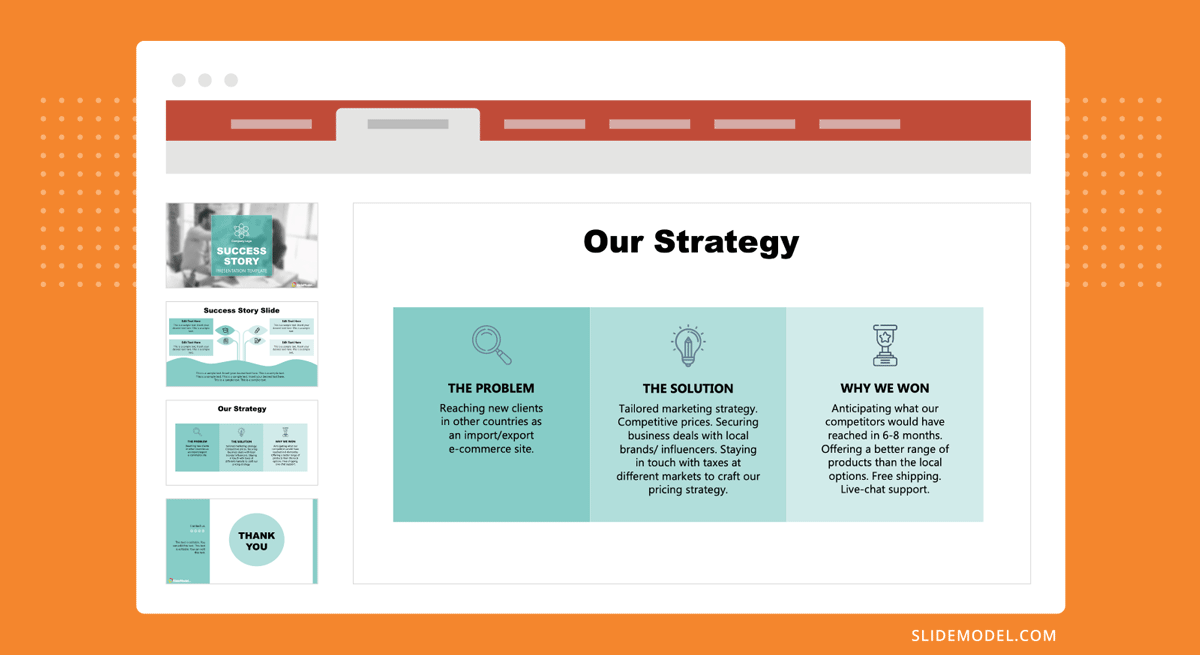
Step 1. Organize The Initiative
The first step is to undertake the divergent thinking initiative. You’ll need to organize a physical or online space for all stakeholders to meet. You’ll also have to invite them and make sure they know how to attend and help with any troubleshooting.
Use the meeting time to brainstorm about one topic or select a few related topics. Try using a new space for everyone and ensure they all feel welcome. At the beginning of the session, explain to the participants what the goal is and what exercises you’ll be doing together. You can do all this alone or with a group of 2 or 3. But for big decisions in large companies, you’ll need more minds to work with.
Afterward, in the presentation, include an agenda slide at the beginning that explains how you organized the session.
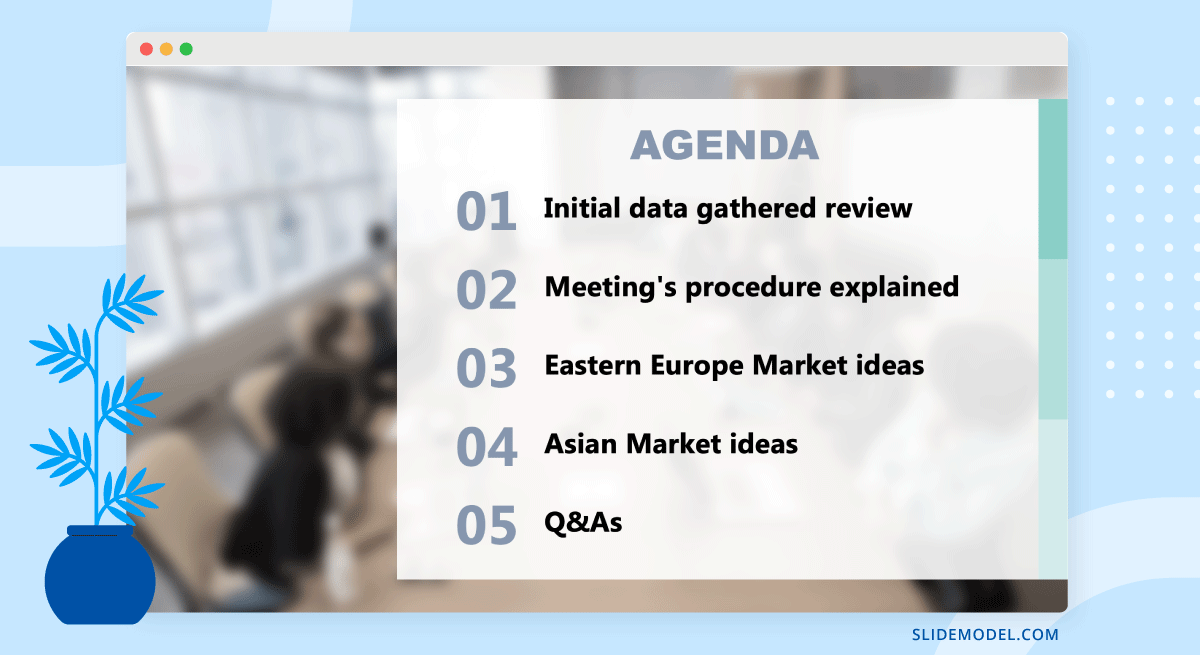
Step 2. Keep Track of Everything
Every thinking session needs a mediator and a record keeper. Keeping records objectively helps look back on the session after it’s over and develop solid ideas with convergent thinking techniques. Depending on the number of people involved, you might need a record keeper that doesn’t participate in the thinking exercises.
Take written notes, and snap photos and videos of the conversation for in-person group sessions. Keep all Post-Its, handwritten notes, and doodles in a file.
In the case of digital meetings, use an online whiteboard, take screenshots of the progress, and make notes on the whiteboard to look back on later.
Include one or two slides with images and takeaways about the session in the presentation. Create a simple gallery with photos or a process timeline visual with images and notes.
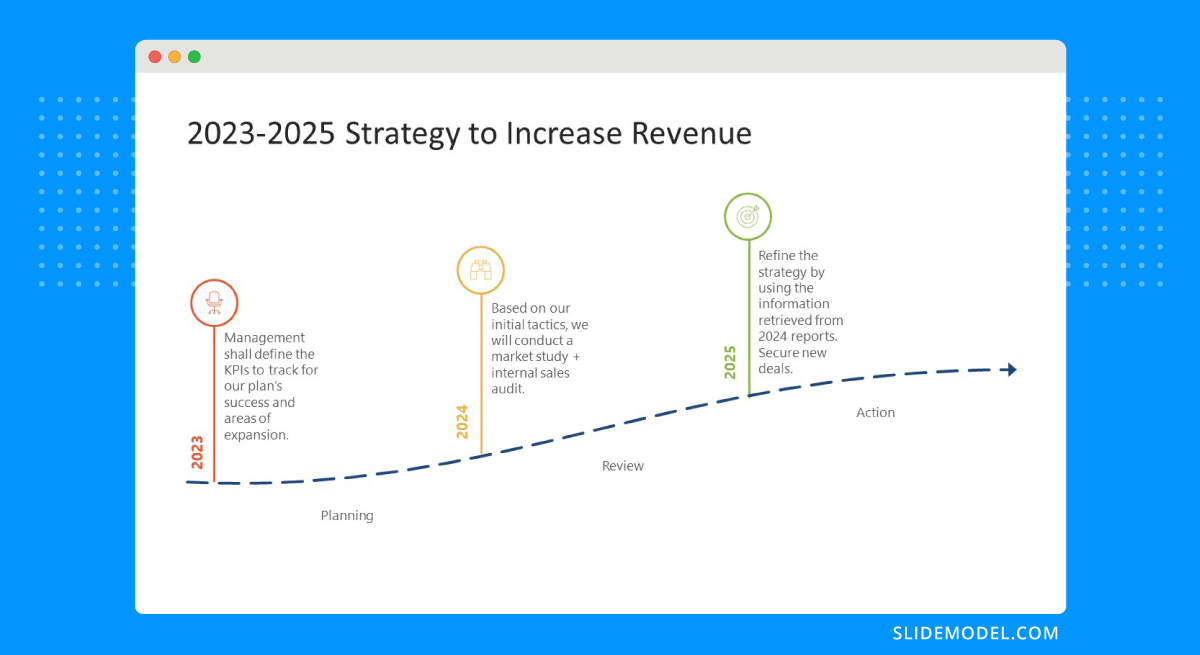
Step 3. Build the Slides
Put all the information together into an outline and organize the session notes. List findings, outcomes, and recommendations in a document and have them ready to transfer into the slides.
The team working on finding solutions to “How might we get more clients in other countries?” for the import/export company uses a case study structure for their presentation.
This is how you structure a case study:
- Executive Summary
- Introduce the topic of the case study and identify the divergent thinking model used. Explain why you used it over another less creative thinking model.
- Summarize key issues, findings, and recommendations.
- Introduction
- Outline the case study’s aim to illuminate divergent solutions for the issue at hand. Share goals and expectations.
- Share the divergent thinking session agenda with a PowerPoint template that separates each topic into its own visual section. This makes it easy to skim.
- Process
- Use a timeline or process PowerPoint template to visualize ideas developed during the divergent thinking session.
- The team’s presentation used a SWOT Analysis to think divergently about their pressing question. Over a few PowerPoint slides, show the brainstorming results for each section of SWOT.
- Share the initial, raw findings with a mind map visual.
- Include photos, screenshots, and notes about the new ideas.
- Share quotes from participants that highlight the benefits of the session, both for the pressing question and their work in general.
- Findings
- Use convergent thinking to consolidate all the ideas that came up during the divergent thinking SWOT session and finalize two for each section of SWOT.
Share relevant data visualizations supporting the validity of the strengths, weaknesses, opportunities, and threats.
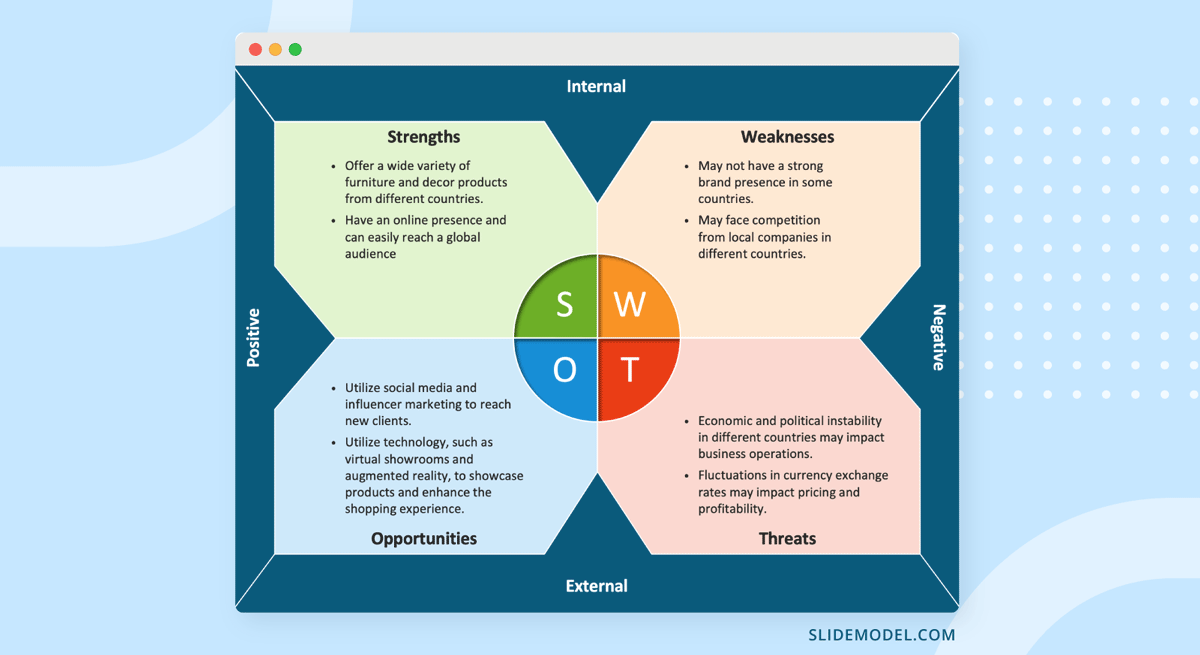
- Recommendations
- Considering the SWOT analysis, use divergent thinking techniques to develop solutions and answers to the original question.
- Share these solutions with a summary of the best suited and pinpoint the best options for the company.
- Recommend implementing the new divergent ideas and why they are worth it. Make projections using existing data.
- Use data to explain why these solutions are the best option for reaching the company’s short and long-term goals.
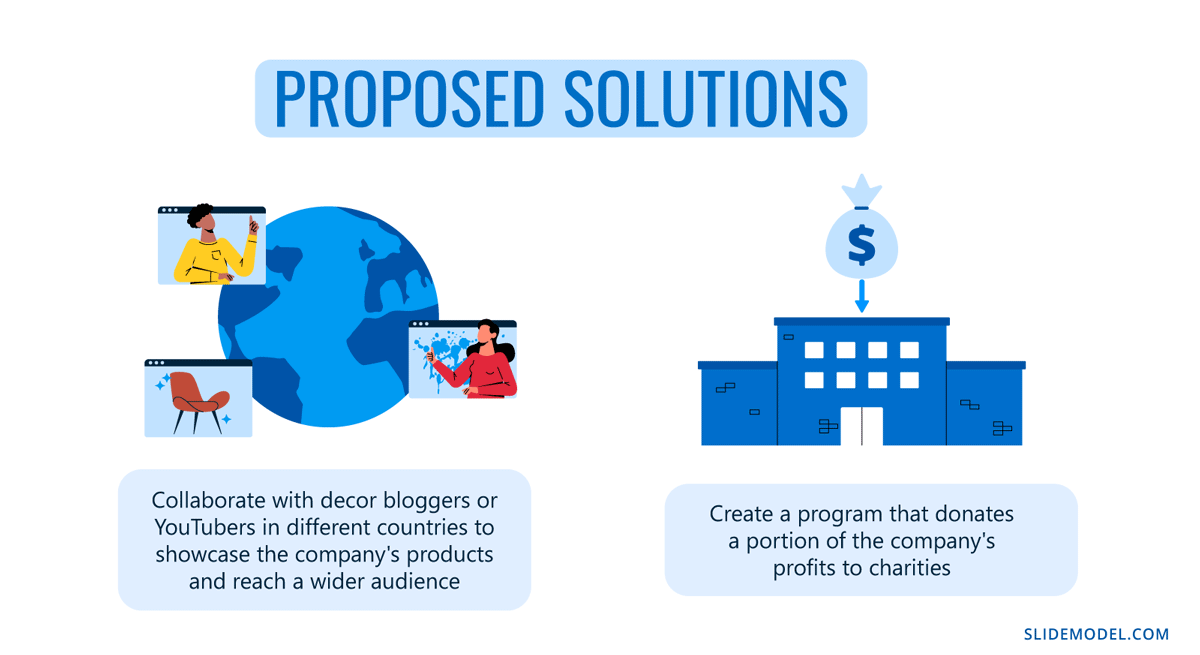
Step 4. Review
Your case study presentation is almost ready. Review your slides and the information on them with the key players in your divergent thinking initiative. Ask the record keeper to see if the information on the presentation is correct and to let you know if something is missing or needs further elaboration.
Speak with your team about the recommended solutions before, during, and after putting together the presentation. Use your convergent thinking skills to add the finishing touches to the content in the case study. Ensure a flow of information makes sense; problem > resolution > recommendation.
Step 5. Share and Present
You’ll need to prepare to present the slide deck to the stakeholders with decision-making power. If divergent thinking techniques are uncommon in the company, your audience will need an initial conversation about why you used this process instead of “doing what is always done.” Share the reasons why divergent solutions are better in this particular scenario.
Share how divergent thinking fosters innovation and how novel ideas take brands to the next level. Your ideas might get pushback from the finance and legal departments, so do your research beforehand. Show them how to implement your ideas with the company’s resources or how to get them easily.
Practice the speech alongside the presentation slides and be ready for questions at the end. Have your data slides ready to defend your case about why your proposed resolutions are worth the effort and cost.
Conclusion
Thinking divergently used alongside convergent thinking is a winning combination for many of your business problems. Next time you have a situation that’s not getting results or isn’t advancing how you’d like to, attack with a divergent thinking session.
Then show your higher-ups the recommendations so that together you can make changes that stand out and build a brand identity your entire company can be proud of.
